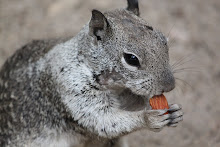Gary Hustwit's documentary film, Objectified, addresses the meaning of objects and design in our everyday lives. He examines how form and content interact in the functionality of products we encounter daily. Through interviews with designers from all over the world, including representatives of SmartDesign, the Bouroullec brothers from Paris, Chris Bangle of BMW Design, and Tim Brown of IDEO, viewers are exposed to a glimpse of how design functions in society today. Each designer discusses what makes good design, and the relationship that humans have with the products we use.

Through the standardization of mass produced objects, design has the power to reach millions and millions of people, with designers making things that are geared towards improving people's lives without them even noticing. Design is the search for form, not only that of physical or tangible objects but also using form to shape people's choices. As discussed in the film, the nature of design is a strong focus on the new, about what is going to happen, not what has happened.
See a few of the designers featured in the film, including Jonathan Ive of Apple, Australian Marc Newson, and Alice Rawsthorn, with director Gary Hustwit.
Form follows function. These three words are key to the business of design. Let us consider objects like a spoon and a chair. As mentioned by Rawsthorn in the film, if a martian were to land on earth and encounter a spoon, it would observe its shape and form, and be able to figure out it's purpose. Likewise, the form of a chair suggests and communicates it's function. These are industrial design products that's invention preceded the digital age, and they maintain their meaning as examples of design's "form follows function" philosophy.
(Is that a spoon? The simplicity of the object's form in this illustration reminds me of Rene Magritte's The Treachery of Images, doesn't it? Just a little bit?)

Below, see a rough example of an early design of a wooden chair.
Also, see a lounge chair designed by Charles and Ray Eames in the 1950s, a modern example of the progression of the chair's form following function.

The viewer gains access to behind-the-scene moments in design firm offices, allowing us to see the prototypes, sketches and on-screen digital development of product design, such as a potato peeler. The new and improved potato peeler is a reaction to the dissatisfaction of the uncomfortable peeler that preceded OXO's Good Grips version.
Renowned German designer Dieter Rams lists attributes of what makes good design, including descriptors such as "environmentally friendly, long-lived, unobtrusive, consistent in every detail, and as little design as possible." These qualities speak to the goal of designers in creating objects that will achieve a new, aesthetically appealing design, while having the potential to be long-lived in its purpose and function.






No comments:
Post a Comment